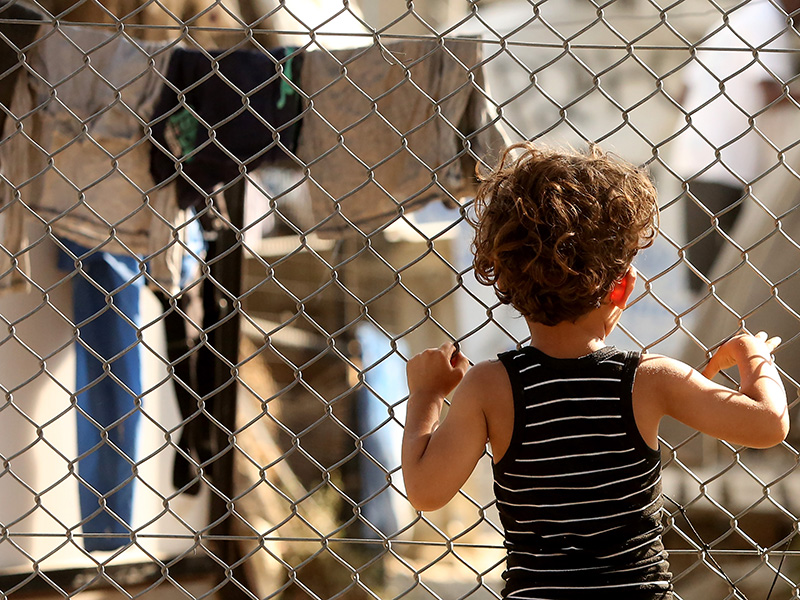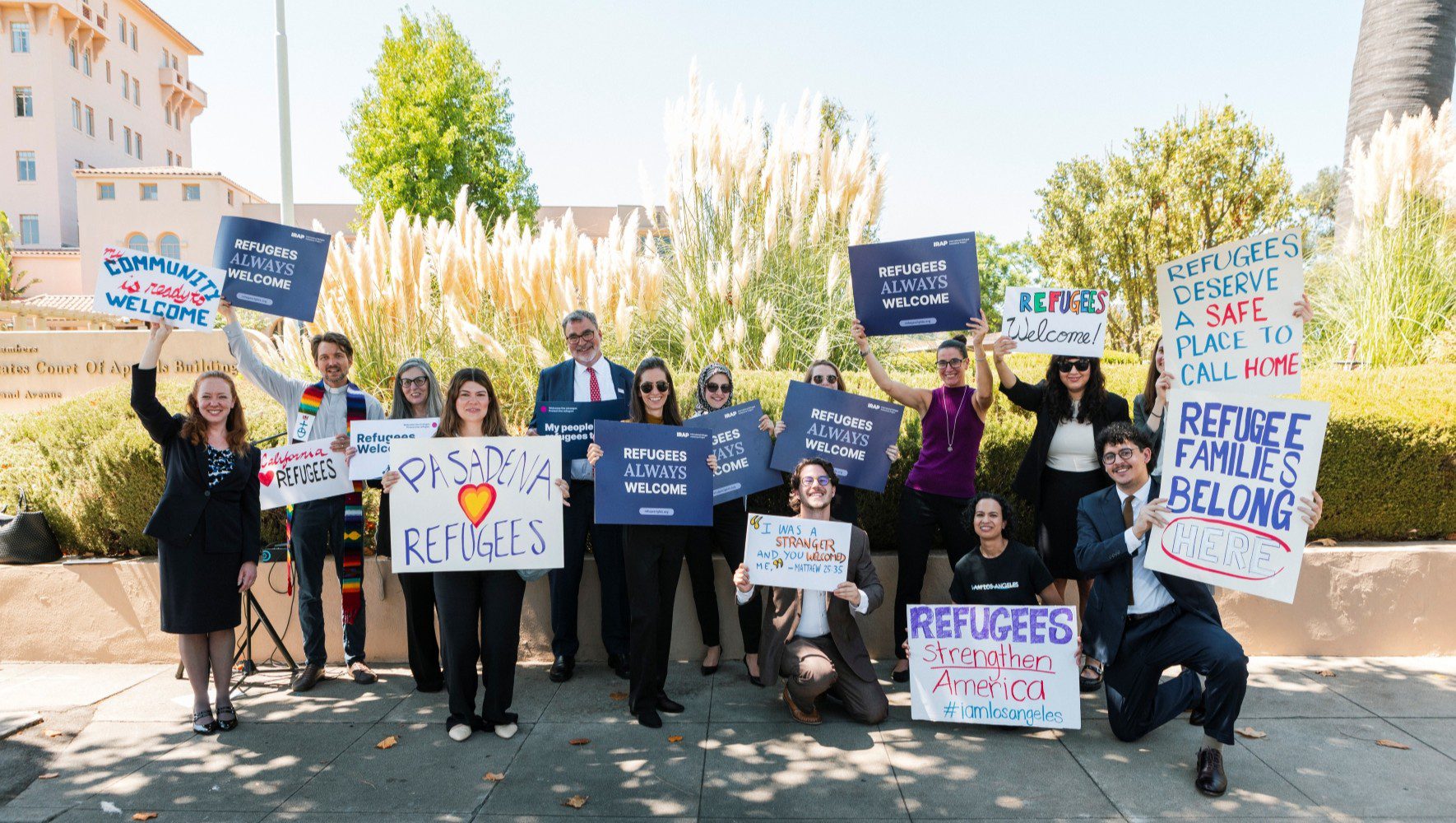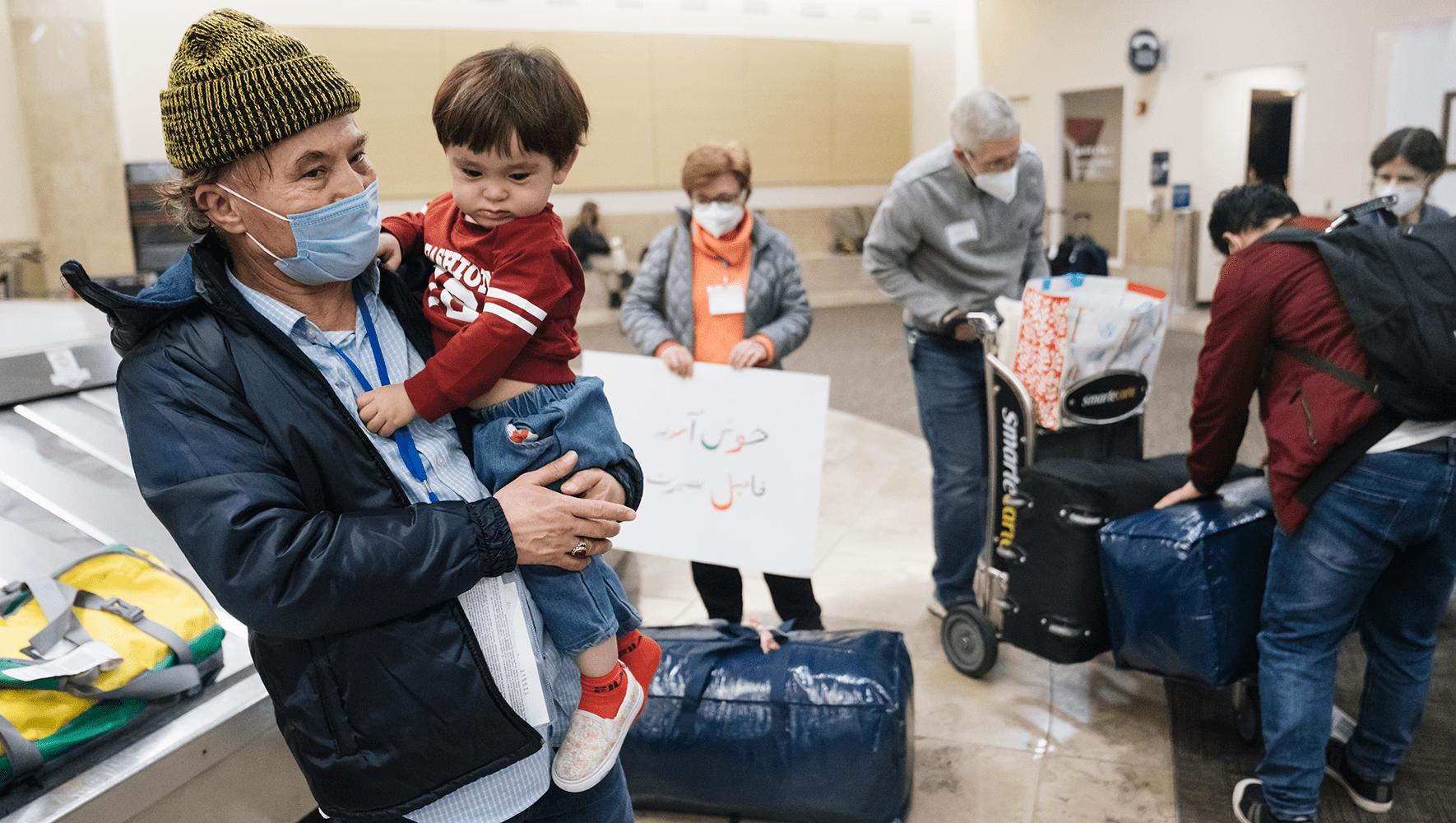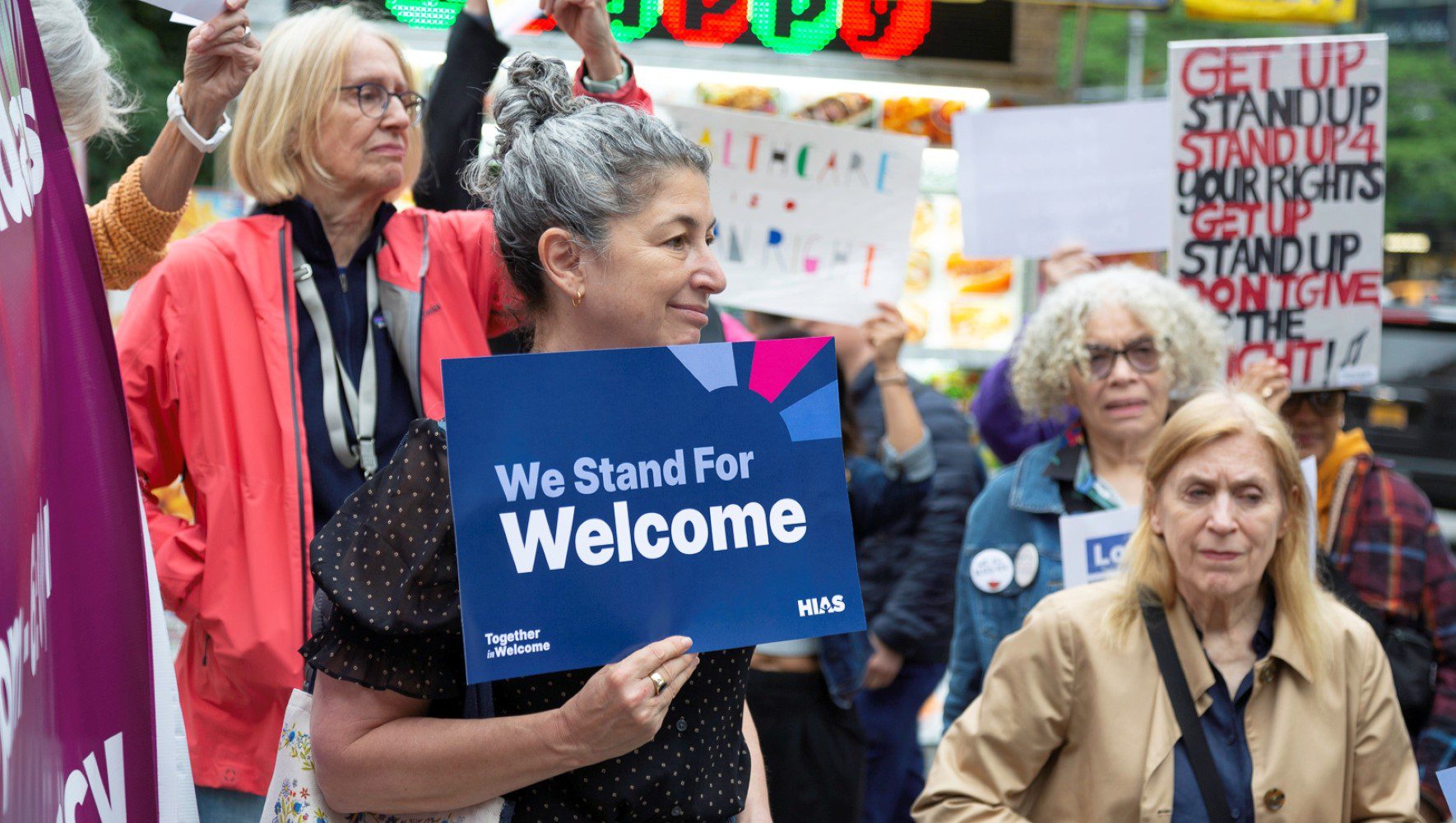New Record Number of Refugees Brings Urgent Need for Solutions
By Meggie Weiler, Policy Officer
Jun 19, 2018

A refugee child looks through a fence at the Moria refugee camp on May 20, 2018 in Mytilene, Greece.
(Adam Berry/Getty Images)
According to UNHCR’s latest annual Global Trends report, a total of 68.5 million people were displaced from their homes in 2017, marking the fifth straight year that forced displacement has reached a new record high.
That number includes the 3.1 million asylum seekers awaiting a decision on their application, and 40 million people internally displaced in their own countries.
But in the face of what is also the largest global refugee crisis in recorded history, with 25.4 million registered refugees searching for safety, an increase of 2.9 million from 2016—the largest increase in a single year in UNHCR history—a divergent international response has taken shape.
68,500,000 people.
68,500,000 stories.
68,500,000 dreams.
68,500,000 journeys.
68,500,000 lives uprooted.
68,500,000 missed chances.
68,500,000 longing for home.
68,500,000 unthinkable tragedies.
68,500,000 heads full of memories.
68,500,000 were displaced at the end of 2017. pic.twitter.com/vyBF2NnoNt— UN Refugee Agency (@Refugees) June 19, 2018
Some countries have decided to shut their doors, while others have opened their doors wider.
On this World Refugee Day, with no end to this global humanitarian crisis in sight, it is critical to consider the future for these millions of men, women and children.
“We are at a watershed, where success in managing forced displacement globally requires a new and far more comprehensive approach so that countries and communities aren’t left dealing with this alone,” said UN High Commissioner for Refugees Filippo Grandi.
sobering statistic: nearly 1 of every 100 people on the planet (68.5 million) is internally displaced (IDP), a refugee, or seeking asylum. nearly 2/3 (40 million) forcibly displaced within their own countries in situations where protections minimal. https://t.co/eP05mniMx4
— Richard N. Haass (@RichardHaass) June 19, 2018
Finding solutions for refugees has never been more urgent or more pressing, but durable solutions look different for each refugee, and must meet their individual needs. For some, the best solution is voluntary repatriation, or returning to their countries of origin.
For others, the communities hosting them as refugees provide them safety, opportunity and a permanent solution to displacement.
However, in reality, a growing number of today’s refugees either cannot return to their homes, or are being hosted in countries that are overwhelmed by the global need, making it ever more challenging to integrate successfully. In fact, 85 percent of refugees live in developing countries.
Many remain in dangerous situations even after fleeing, or face persecution in their new communities. For these refugees, resettlement is not only the best, but in many cases, their only option.
Despite the growing international need, including a result of crises in the Democratic Republic of the Congo, South Sudan and the Rohingya Bangladesh fleeing Myanmar, it remains true that only a small percentage of the world’s most vulnerable refugees will ever be resettled in a third country.
Of the 25.4 million registered refugees, UNHCR estimates that at least 1.2 million are in need of resettlement. That represents one percent of the total refugee population, and is a pitifully small amount when you consider that UNHCR has labeled 17.2 million refugees as ‘of concern.’ Two-thirds of all refugees come from five countries: Syria, Afghanistan, South Sudan, Myanmar, and Somalia.
To put that in perspective, even if the world were able to resettle those refugees in immediate need—a plan UNHCR says could take up to 20 years—for every refugee resettled 14 would remain in need.
In 2017, less than 70,000 refugees were resettled, a more than 48% drop from 2016. While this can partly be attributed to countries such as the United States significantly lowering quotas, the number of acutely vulnerable refugees in need of resettlement is increasing, and quickly.
This just in - NEW record high in #refugees and displaced persons just as @POTUS sets record low in refugee resettlement and a moral low by #separatingchildren from asylum seeking parents. https://t.co/1Z4S9WOAGQ
— mark hetfield (@MarkJHetfield) June 19, 2018
With dismal projections for state quotas in 2018, and the number of refugees expected to continue rising, it seems clear that this global problem will only worsen.
A decrease in state quotas and international commitment to refugee resettlement and protection puts the world’s most vulnerable refugees—children—in harm’s way. In 2017, 48% of the refugees submitted to resettlement states were women and girls, and 51% were children. Of Syrian refugees, the largest population needing resettlement, 54% are children under the age of 17.
At HIAS, we like to say that we used to help refugees because they were Jewish, but now we help refugees because we are Jewish. Regardless of your beliefs, it is easy to see that there are vulnerable people across the globe who need help, and to understand their desire for safety and permanence.
While we may not be able to slow the global refugee crisis, the global community is obligated to share in the responsibility of helping to protect refugees. This World Refugee Day, join us by writing to your members of Congress and asking them to support the life saving U.S. Refugee Admissions Program.


